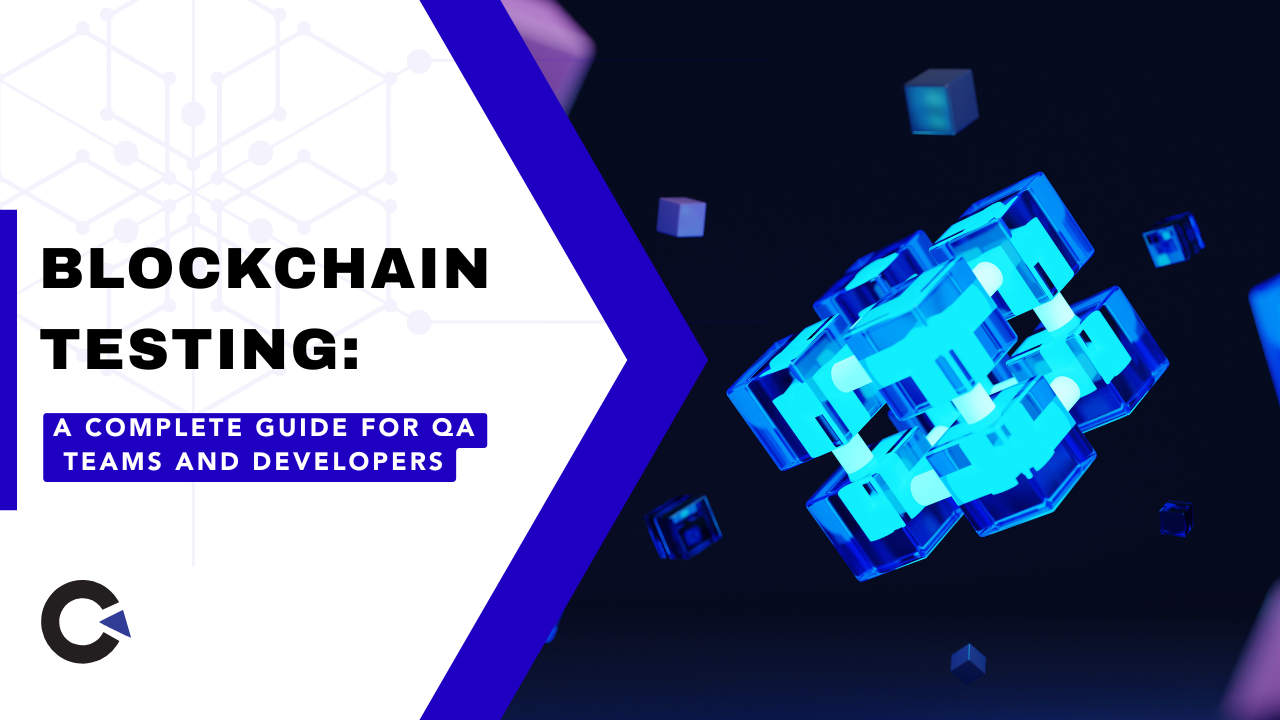
by admin | Aug 25, 2019 | Software Testing, Fixed, Blog |
In this blog article, we will list open source test case management tools. To unearth new bugs, you need to update your test cases periodically. If you are a test manager and would like to host your own test case management, then this article will be helpful for you.
Nitrate
Nitrate is a new test plan, test run and test case management system, which is written in Python and Django web framework. It has a lot of great features, such as:
- Easy to use to create and manage testing life cycle with plans, cases and runs.
- Multiple and configurable authentication backend, e.g. Bugzilla and Kerberos.
- Fast search for plans, cases and runs.
- Powerful access control for each plan, run and case
- Ready-to-use and extensible issue tracker that allows to track external issues with test cases and test case runs.
- Accessible with XMLRPC APIs.
Kiwi TCMS
Test case management system, with lots of great features, such as workflow wizards, automation plugins, 3rd party integrations, release reports and external API.
- Transform the testing process within your team
- Be more organized, transparent & accountable
- Boost engineering productivity & participation
Redmine
Redmine is a flexible project management web application. Written using the Ruby on Rails framework, it is cross-platform and cross-database. Redmine is open source and released under the terms of the GNU General Public License v2 (GPL).
Bugzilla
Bugzilla is free and open source web-based bug-tracking software that is developed by an active group of volunteers in the Mozilla community, and used by thousands of projects and companies around the world. It can be installed on Linux and other flavors of Unix, Windows or Mac OS X.

Test Storage
Test Storage – test case management system. Currently in early alpha development and currently not available via npm.

by admin | Aug 27, 2019 | Software Testing, Fixed, Blog |
Quality control mechanisms and quality assurance systems represent critical components of modern business technology. These mechanisms and systems comprise the essence of quality management practices that seek to fulfil quality requirements directed by clients and customers. QA testing represents quality control in software development frameworks and processes, these professionals, therefore, play a central role in driving quality assurance systems. These QA systems reinforce customer confidence in the ability of a QA company to deliver on its promises. Given the criticality of the function QA Testers essay, it becomes imperative for companies to understand the reasons why these professionals would quit and then find ways to retain their top-notch QA testers.
Professional Motivation
The real-time creative and technical contributions of QA testing personnel are gaining the spotlight. This implies the role of such personnel is no longer confined to finding glitches in software after completion of the development cycle. Increasingly, QA testers are participating at multiple levels, thereby elevating the quality and scope of their interventions in the software development cycle. However, such testers remain subject to uncertainty in terms of their professional growth and the quantum of impact they exert on software development. When such queries remain unanswered, they often trigger insecurity and discontent leading to attrition within the ranks of QA testers. Managers and leaders must essay a positive role by reinforcing self-belief, the usefulness of the skills of the testers, and show them a clear path for professional growth.

Tough Job Market
Employment opportunities remain subject to fluctuation in uncertain economies. The scope of employment for QA testing engineers is currently restricted, which incites insecurity in the mind of such personnel. As mentioned, such insecurities can have a serious impact on their job performance leading to potentially degraded performance and strife with co-workers. Such work environments should encourage a QA Company to offer additional training opportunities to testers as part of talent retention programs. There are several other non-financial retention strategies designed to complement good salary packages aimed at retaining the services of the top QA testing professionals.
Accelerated Professional Growth
A failing career curve could prove to a tough challenge to the highly proficient QA testing professionals. A keen awareness of and interest in new technologies (such as automation), which are indispensable for the software testing domain, are necessary to keep job insecurity at bay. Intelligent interventions from the management group of a QA Company would help stem the tide of attrition and boost the talent retention metrics. It makes business sense for industry operators to offer meaningful opportunities for professional growth to QA testing personnel. Promotions, new learning opportunities, top-notch projects, regular dialogues with superiors, and regular performance-based bonus could effectively counter the flagging enthusiasm of QA testers. The outcomes would be happier professionals, higher levels of employee engagement in the workplace, and faster attainment of business targets.
Assessing the Costs of High Turnover
Employee retention is crucial from the perspective of any organization, and the same applies to the realm of QA testing. High turnover of such professionals could impact the ability of a QA Company to deliver on client commitments. In cognizance of this, management teams must work to quantify the costs of employee turnover and initiate actions to retain their best performers. They must reinforce the professional sense of self-worth by promoting their contributions in the workplace, and ensure that employee retention strategies are refined continually. These actions must be tied to the overarching goal of sustaining the levels of the success of an organization and enhancing its reputation to deliver on the increasing and stringent demands of clients.
Revisit the Mundane
One of the reasons for the attrition of top professionals is the feeling of being stuck in a rut in the workplace. The leaders of a QA Company need to devise strategies and develop opportunities that engage the mind and creative talents of QA testing professionals at different levels. This is quintessential to employee retention in an industry where the best talent tends to migrate from one employer to the next, given the demand for their skills in a stretched industry. It becomes necessary to drive the intellectual capital to yield a multi-spectrum of results, which would provide the much-needed boost to self-esteem and morale of such professionals. By ensuring this consistently, QA companies would see a marked improvement in work performance and a much lower rate of attrition.
In Conclusion
It is important to retain their best QA testers if a QA Company expects to retain a leading edge. With long term and engaged employees, any company can elevate the quality of its services, thereby gaining the winning edge over their competitors. In an already stretched and demanding market, it becomes critical for a QA company to retain its top testers for the long term. We pride ourselves in the fact that we have the best team of testers who have been with us since the inception of the company. Connect with us to work with a highly energized and expert QA Company.

by admin | Sep 1, 2019 | Software Testing, Fixed, Blog |
Test management refers to the activity of managing software testing process using test management tools. The purpose of test management is to meet customer expectations, develop a new software product within shorter timeframes, and achieve project goals. In this context, testing managers act as agents who provide tips, tools, and procedures to testers with the aim of guiding a project to successful completion. In an ideal scenario, test teams would collaborate with software development teams to develop high-quality software and hardware products.

Managing Software Testing Teams
The effective management of testing teams must proceed together with the use of automated test management tools. These tools are recommended since they promote a collaborative work environment, drive best practices in software testing services, and offer detailed reporting functionality. Further, such tools assist managers in writing test scripts, executing tests, and managing several teams from a remote location. Managing software testing processes increases the productivity of testing teams, and a sharp focus on test management processes increases customer satisfaction leading to the smoother execution of testing projects.
Test Management Processes
Four phases distinguish the typical test management process offered by software testing companies. These include test analysis, test planning and preparation, test execution, and test closure. The first phase analyzes and establishes the functional and non-functional requirements of a testing project. In the second phase, testers set up the testing environment along with everything required for the preparation of test planning, test data, and test cases. Actual testing begins during test execution – this phase also detects glitches within the software application undergoing testing. During test closure, testing engineers prepare test reports to record all test activities and results. The test management process must include incident management and test project evaluation based on certain metrics.
Test Management Tasks and Activities
Activities for the preparation, organization, and execution of test cases take precedence in test management tasks and activities. The organization of test cases must ensure that all the features (or functionality) within an application are thoroughly tested. Testing engineers offering software testing services must use actual test data during test case execution activities and report the results to development teams. Further, test execution processes must be monitored to improve the process and flow of test execution processes. In terms of reporting and analysis, test engineers must gather and compile all useful information to drive improvements in testing processes.
Negative Impacts on Test Management
Inadequate testing time, a lack of testing resources, spatially distributed testing teams, and a blurred view of requirements – these represent factors that can negatively impact test management activities. In response, software testing companies must carefully plan project timelines, allocate the right quality and quantum of testing resources, and outsource testing efforts effectively – in an effort to reduce the costs of testing. Additionally, testing engineers and their managers must validate business and technical requirements before the commencement of testing activities. This is crucial because a lack of clear and complete requirements may spell disaster leading to enormous waste in terms of time and money.
Challenges to Test Management
Test managers may face challenges when they seek to deliver projects on time and within budget. Awareness of testing situations and progress in testing projects represent the best defenses against such challenges. Further, managers must share the nature of emerging risks with team personnel and clients, seek insights into possible solutions, and drive interventions underlined by timely decisions. They may also try a variety of testing approaches and technical frameworks in tune with project budgets.
In Conclusion
The rising of commercial competition and complexity in testing practices exert pressure on testing organizations to develop and launch products within finite timelines. In response, software testing companies must appreciate, refine, and implement the techniques and protocols that underlie software test management. A software testing company with a team of experts would be adept at helping businesses outrace the competition – connect with us to become a frontrunner in your industry.

by admin | Jul 31, 2019 | Software Testing, Fixed, Blog |
Software testing or QA Testing acts as the ‘gatekeeper’, ensuring the delivery of quality software applications and packages to clients and customers. The very act of Software Testing implies the introduction of ‘hygiene’ in the development of computer code that drives a variety of modern software systems. As a corollary, the absence of such testing (or sub-par testing practices) defeats the purpose of digitization and can extract a heavy toll in terms of manifest malfunctions in the operation of mission critical applications and systems. Therefore, Software Testers must equip themselves with all manner of skills that enable them to perform their duties. These skills may variously relate to technical qualifications, technical knowledge, a holistic approach to QA Testing, and developing a habit to understand the core requirements of a testing project.
Basic Programming Knowledge
Modern computer code represents an enormous undertaking that can be navigated through the use of coding languages. Software Testers must realize the importance of pure knowledge and the technical skills that emanate from fluency in such languages. In line with this, Software Testers must constantly add to their body of knowledge as a means to amplifying their technical skillsets, which would offer them an advantage in terms of identifying and remediating coding errors in different QA Testing projects.

Thorough Understanding of Business Situations
Software Testers, as a matter of principle, must develop a clear understanding of the project at hand. They should be able to appreciate the fact QA Testing is undertaken as part of creating quality assurances that guarantee the performance of a larger business model. This is achieved when Software Testers map various business scenarios in their minds and attempt visualization of complex business problems. Such actions would empower Software Testers to envision solutions to such problems and apply their testing skills to that effect. In addition, the modern QA Company should encourage the inculcation of such a mindset in every tester, which would yield rich dividends in the form of heightened awareness in the minds of each tester. The outcomes may include streamlined testing efforts that bear zero scope for confusion or complications in devising testing processes.
Automated Testing Processes
The current breed of Software Testers must train to use automated testing frameworks and processes. However, this does not negate skills that focus on manual testing. Automation in QA Testing assumes importance since these test processes offer significant time savings to the testing community, thereby allowing Software Testers to focus their energies on devising complex testing scenarios. Automation in Software Testing also implies the use of technology to validate computer code in short order, thereby enabling a software testing company to take on large testing projects. In addition, test automation generates huge volumes of data that remain open to review by QA Testing engineers, leading the way to code refinement and the creation of grounds for further testing.

Knowledge of Web and Mobile Technologies
Awareness of such technologies is key when Software Testers commit their efforts and careers to the domain of QA Testing. Such awareness must remain in an ongoing project, clearly exhibiting the working life of QA Testing engineers and professionals. These personnel can improve by consulting online tech news websites, apps, technical journals, and other forms of knowledge publications to keep themselves abreast with emerging web and mobile technologies. In addition, they can apply the knowledge to their work areas and thus gain a competitive edge over their peers and colleagues. Further, such knowledge can elevate their performance in QA Testing exercises when such personnel participate in live testing projects.
DevOps and Agile
Software Testers must gain fluency in the various dictates of modern methodologies such as DevOps and Agile, since these promote a collaborative work environment in which Software Testers must fully participate to generate the best outcomes. These methodologies also remain significant to the evolution of modern testing frameworks hence the participation of a tester does not remain an option. Specifically, veteran Software Testers note that the testing community must ensure all test cases are automated as part of efforts to achieve 100% code coverage. In addition, Software Testers must work to attain standardized test environments wherein the deployment of QA boxes is automated. Further, pre-testing tasks, post-testing tasks, and code clean-up operations must be automated and aligned with continuous integration cycles.
In Conclusion
The skills outlined can serve to empower the modern software testing professional to excel in the workplace. The managers of a QA Company must encourage their testing staff to inculcate the correct mindset in such matters. In time, the application of such skills may encourage the QA Testing community to elevate industry standards and create new benchmarks to gauge professional performance. Our team consists of experts with these and more requisite skills. Connect with us so we can help you to leverage these skills to outsmart your competitors.

by admin | Aug 6, 2019 | Software Testing, Fixed, Blog |
The test summary report outlines the summation of software testing activities and final testing results. Software testers are required to communicate testing results and findings to project stakeholders on the completion of a testing cycle. The content of the test summary report drives decisions for the release of the software. Revision history, distribution list, document review, project description, testing scope, functionalities and features tested in a cycle, test execution details, test coverage, and results, defect matrix, and outstanding results represent the content in a test summary report.
When to Create a Test Summary Report
The report would be created at the close of software testing cycles. In certain cases, testing engineers working on behalf of a QA company can perform a single round of testing before generating a report. Freelance testers can generate and submit the report to spotlight defects in the ‘open’ statuses. The report serves as a guide to help clients with information on the overall ‘health’ of a software application and enable the planning of corrective measures. For instance, a report may convey certain defects repeatedly occurring through several testing cycles. The recommendation from the tester may include the allocation of a higher number of resources to track and analyze the defects, and also a note for the software development team.
What to Include in the Test Summary Report
Precision and relevance form the basis of an informative test summary report. Testing engineers working on behalf of the top software testing companies must aim to custom design the content to match the nature of the testing project and the work assignment. The following points elucidate the inclusions necessary for a test summary report:

The Objective of the Test This section should outline the purpose and general scope of the testing exercise. This portion must reflect the understanding of the tester on the expectations and requirements of a software testing exercise. Additionally, testers should include notes about whether the results meet the business and user requirements. Conformity with business and system requirement specifications and the confidence in providing a quality product to the end customer are quintessential objectives of a testing exercise.
Testing ApproachThis section provides the mechanisms that power the testing approach in a particular testing cycle. Testing engineers must include details of the measures and the types of testing undertaken to achieve the task. A test approach also defines the implementation of the test strategy of a software testing project through two techniques. The first being proactive, in which the test design process is initiated as early as possible to detect and remediate the defects before the build is created. The second is reactive, in which testing follows the completion of design and coding activities. Further, the approach may outline various approaches – dynamic and heuristic, consultative approaches, and a model-based one that would deploy statistical information on failure rates.
Areas Tested and Untested
All the features and functionalities tested would form this section. Testing engineers working on behalf of a QA company are expected to include high-level information in addition to recommendations (for the development team) on the possible new functionalities. Similarly, untested areas of functionality would also form part of this section. The logic and rationale for excluding certain features from testing should be listed in this section for the benefit of reviewers and clients.

Platform DetailsThis section of the test summary report would cover the various versions of a software application, the use of different browsers, and multiple devices. An application must be tested on each of these platforms and the test results collated for the reviewers and clients. This approach is important in modern times given the varied number of platforms, devices, operating systems, and browsing programs.
Defect ReportTesters must report all defects in the interest of saving time and effort for all those involved in the project. This section would be comprehensive and would mention the significant volumes of information, and facts, and would generate a clear view of the technical opinion of the testers. Testing Metrics can include total defects with an information breakup focused on defect severity and additional metrics regarding test cases.
In Conclusion
A test summary report, therefore, is a necessary document and marks the conclusion of a software testing exercise. Test engineers must invest time and effort to complete such reports to maintain clarity and transparency of their efforts and provide clients with a clear summation of the project. This report requires the attention and time of experts and experienced personnel because of the critical nature of the content – connect with us to work with the best in the realm and more.

by admin | Aug 15, 2019 | Software Testing, Fixed, Blog |
Testing engineers in a software testing company are familiar with factors such as delivery guidelines and timeline pressures. However, they must ask the right questions to investigate every assignment to be able to gain a clear understanding of the true objectives of a software testing exercise. This is a necessary trait of a good tester since clear and crisp requirement documents may not accompany every testing assignment. Similarly, insufficient data and assumptions perpetuate the need for a set of questions that must precede a software testing project.

Multiple Sources of InformationA professional testing engineer with expertise in a range of software testing services must cross-check every source connected to a testing project. These could include marketing personnel, business development teams, business analysts, software developers, support desk personnel, the chief operating officer, and other testers. It is important for a software testing company to encourage testers to pose questions that will help to develop a robust testing service or testing framework. An individual answer to each question would help to add clarity to the testing exercise, ultimately contributing to the creation of a better product.
Conducting Investigations A tester with an enquiring mind would be better positioned to observe unexpected behavior in a software application and hence would be able ask the right questions from the point of view of investigating potential issues. For instance, noticing a minor technical error could lead to questions that could help to identify a significant glitch within an application. The testers could ask a series of questions as part of the investigation, which could help to determine the correct answer. Similarly, a team of engineers could conduct an in-depth interrogation of the functionality within an existing product, leading to refinements in the newer version of the product. Such elevated products would lead to delighted existed clients and potential new business for a software testing company.
Experience and Know-How
An experienced software tester can use the experience gained from previous assignments to enhance the quality of the software testing services in the current projects. Questions and queries arising from a current testing assignment could be answered from the knowledge gained from such experience, thus prompting quicker resolution. For instance, a software tester may investigate the processes slowing the performance of an application. From experience it would be easier to determine which solution could spur better performance, and also remedy any defects that could potentially disrupt the end-user experience.

Market ConsiderationsTesters working with a software testing company could frame questions with the aim of bettering the future performance of a product or application in the highly competitive markets. Such questions could assess features (or a lack thereof) that potentially spoil the user experience and could turn them to competitor products. There are certain defining aspects that elevate a certain application vis-à-vis the competing products. These niche areas allow scope for a certain product to outperform its competition and help alleviate any risks arising from the technology or product perspective. By asking the right questions, testers would be able to expand the scope of software testing services and elevate themselves as potential partners in the success of their clients.
The Art of ListeningThe right questions and queries from a tester can help to yield answers that would guide testing practices and define the creation of a robust software-testing plan. Software testers must seek to gain insight by listening to the views and answers from the various stakeholders. Each question must be investigative in nature and aimed at gathering facts, and assessing their impact on the performance of a software application.
In Conclusion
The spirit of inquiry and right questions is extremely critical from the perspective of software testing and the entire gamut it encompasses. The right questions will elicit accurate answers which in turn could help testers gain greater relevance in their software testing exercises. Connect with us to work with testers adept in the entire gamut of software testing and more.




































